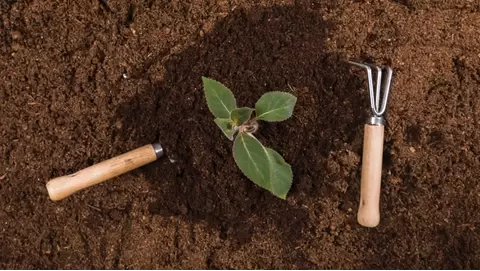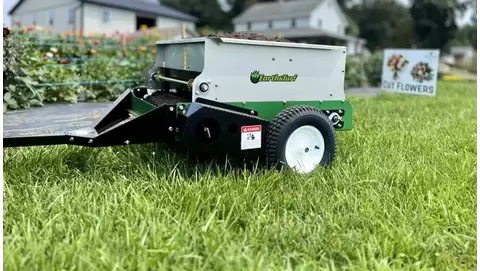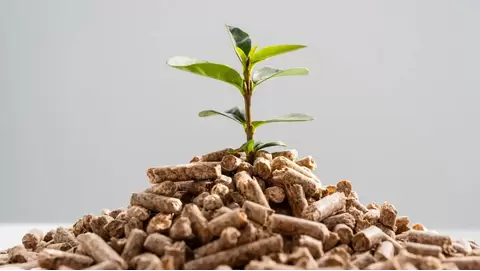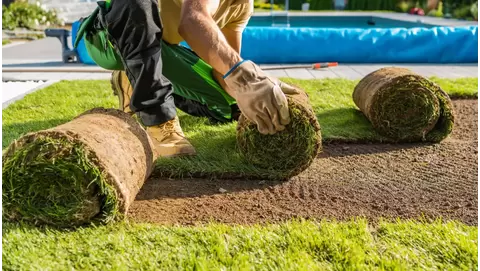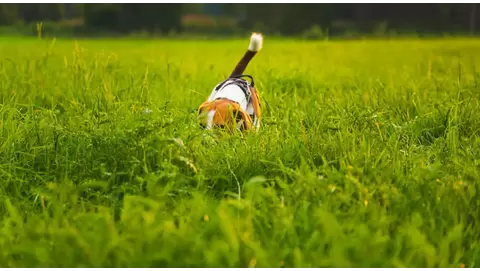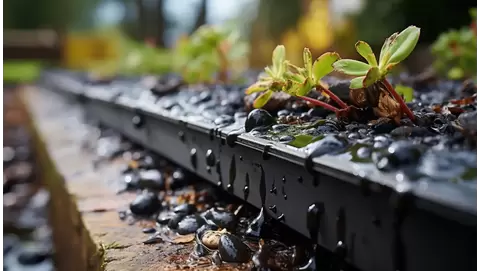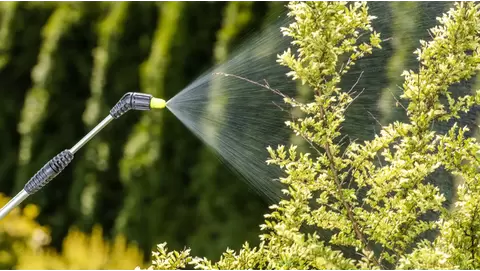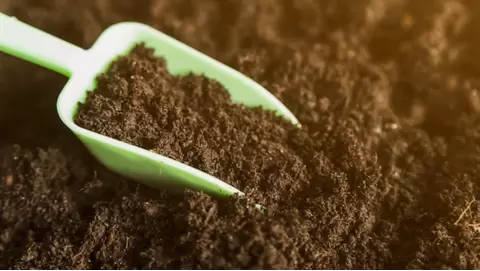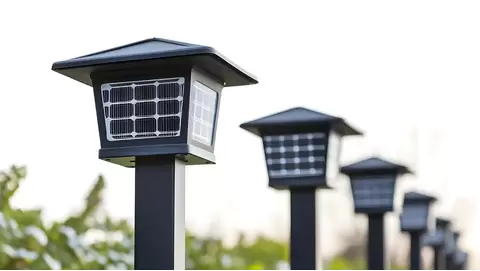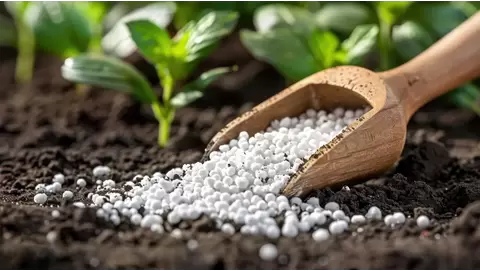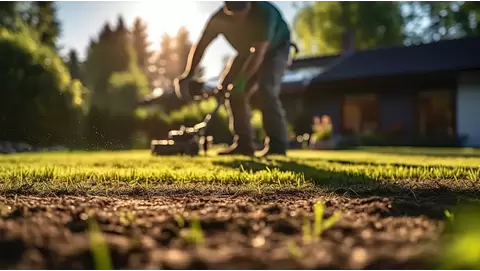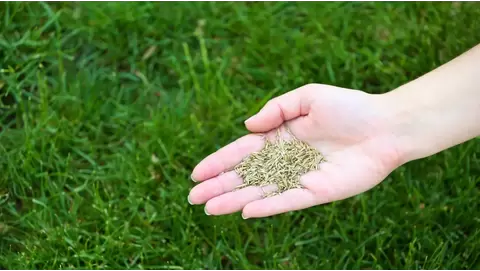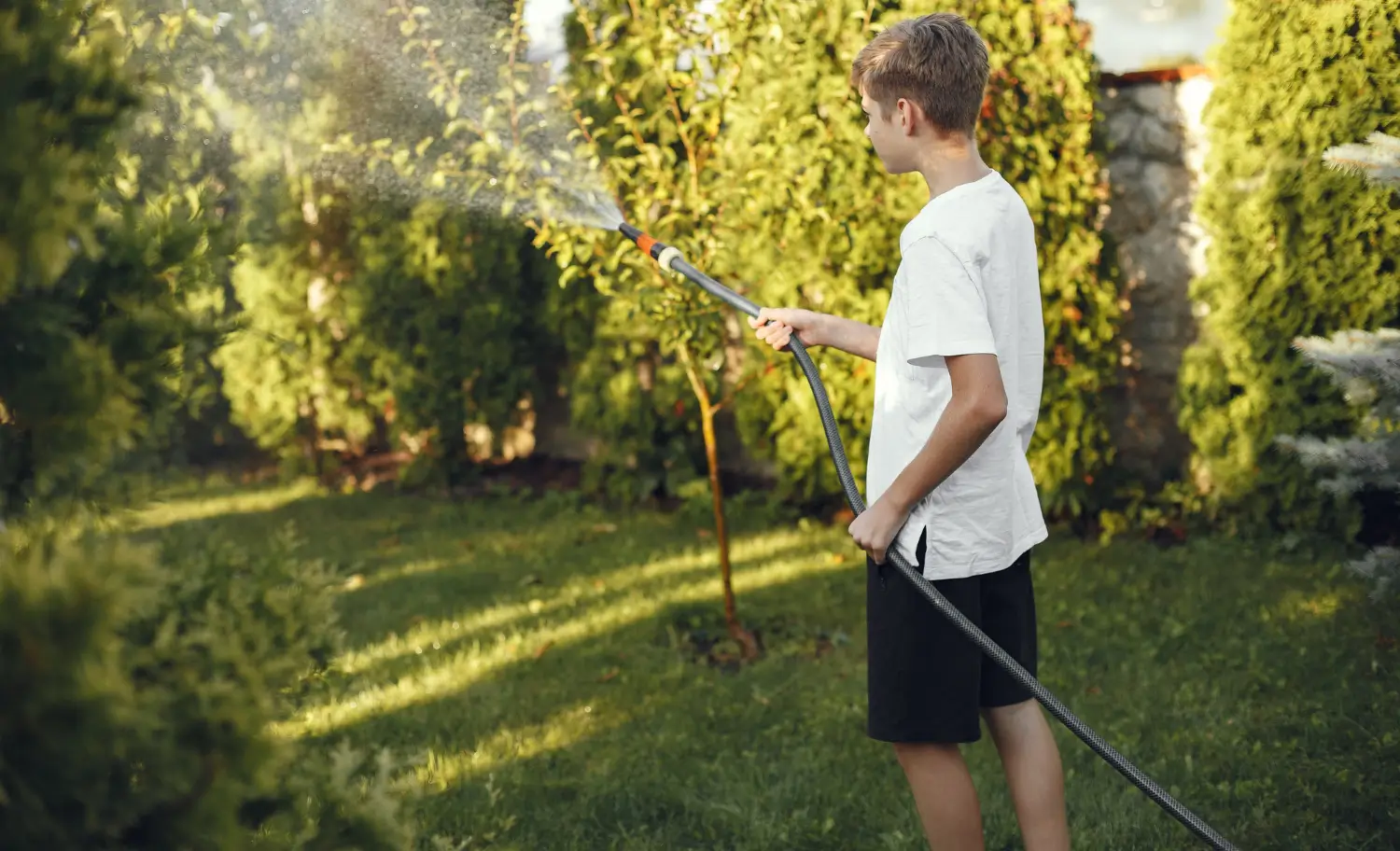
Best time to water grass for a healthier, greener lawn
A well-maintained lawn is more than just attractive. It maintains soil quality, cools soils and the surrounding air, and helps to improve air quality. But a green, thriving lawn requires more than mowing and sprinkling fertilizer. Proper watering is critical to a healthy lawn.
The U.S. Environmental Protection Agency (EPA) estimates that with nearly a third of all household water use in the United States being devoted to outdoor watering. This amounts to billions of gallons daily, but due to bad watering habits, over half of it is wasted. Watering at the wrong time during the hottest part of the day, when all the water evaporates, or at night, when moisture clings to the grass too long, causes disease and can harm the lawn.
Proper temp watering encourages long, deep root systems that strengthen the grass and further protect it from drought and variations in weather. Growcycle offers comprehensive resources for lawn care practices like aeration, overseeding, fertilization and weed control that contribute to a thriving, healthy lawn.
The Role of Water in Lawn Health
When it comes to grass, water will help keep everything green and alive. Its importance in facilitating photosynthesis, nutrient uptake and root development cannot be emphasized enough. Under Watered grass may become weak, dry out, and fight to stay alive as the weather deviates.
How Water Impacts Photosynthesis and Nutrient Uptake
All plants, including grass, use photosynthesis in order to grow. It is like a solar panel for the plant, converting sunlight, water and carbon dioxide into energy. Water transports nutrients from the soil to the grass blades, which in turn make food for the plant. Photosynthesis slows down, which makes it harder for the grass to remain green and healthy, without enough amounts of water.
Photosynthesis, of course, isn't the only process in a plant that is dependent on water. Grass roots extract vital nutrients similar to nitrogen, phosphorus, and potassium from the ground, but these nutrients need to be dissolved in water first to be absorbed into the roots. Grass cannot access these nutrients when there is not enough moisture causing weak, discolored grass growth.
Deep Watering vs. Frequent Shallow Watering
Deep Watering means saturating the soil to a depth of at least 6 inches and preferably 8. This promotes roots to grow deeper, minimizing lawn wear and tear and improving drought resistance. Deep roots enable the grass to weather dry spells by tapping moisture held deeper in the soil.
Frequent, shallow watering—whether daily or every other day—only wets the top layer of soil. This causes roots to grow shallow, making the grass more reliant on watering frequently. Shallow-rooted grass is more susceptible to heat, drought and diseases.
Key Factors Affecting Watering Needs
Watering needs are based on several factors. These factors will help ensure that the lawn receives enough water for deep root systems and long-term health.
1. Soil Type
Soils with other textures retain water differently:
- Because sandy soil drains quickly, it does not hold moisture, and lawns growing in sandy soil may need more frequent watering.
- Clay soil retains moisture longer but is slow to drain, making it more prone to waterlogging and root rot.
- Most lawns thrive in loamy soil because it retains moisture but still drains well, minimizing the need for watering.
2. Grass Species
Different types of grass consume varying amounts of water. Some are naturally drought-tolerant while others require regular watering.
- Cool-season grasses (like Kentucky bluegrass, fescue, and ryegrass) thrive in cooler climates, but during the hot summer months, they need extra water.
- Well-watered warm-season grasses (such as Bermuda grass, Zoysia and St. Augustine) are at least as drought-tolerant and require less frequent irrigation.
3. Weather Conditions
Weather seasonally affects the amount of water required on a lawn:
- Hot, dry conditions are causing more evaporation, which means more watering is needed to keep the grass hydrated.
- Windy conditions can dry soil out more quickly, particularly in exposed locations.
- Rain reduces the need for irrigation, but in the case of torrential rain, runoff occurs, and the water will not soak deep in the soil.
4. Regional Climate
Different climates require unique watering for the lawns:
- Dry and desert conditions need more judiciously applied watering given the dryness and extreme evaporation potential.
- Watering needs in humid areas can be less as moisture levels in the air in larger circles help to keep moisture content in the ground.
- In temperate climates, there are seasonal differences so have to change the watering schedule as the seasons change throughout the year.
Science Behind Watering Schedules
Watering a lawn in timely intervals and within an appropriate quantity is a big assist to plant physiology, increasing the absorption of water and eliminating the wastage of unabsorbed extra water.
Scientific research into lawn care suggests watering should be timed and varied according to how grass utilizes the water it is given, how quickly moisture evaporates and the impact of weather on soil moisture.
Plant Physiology and Water Absorption
Roots are used by grass plants to take up water from the soil. Once there, water travels up through vascular tissue in the plant to the leaves, where it is crucial to photosynthesis and cools the plant as it evaporates.
One of the crucial processes involved in this is evapotranspiration, which means:
- Evaporation: Loss of water from the soil surface through heat and wind
- Transpiration: Water vapor escapes the grass blades into the air.
If water is lost too rapidly because of high temperatures or strong winds, grass cannot stay hydrated. When soil dries too quickly grass weakens and turns brown and brittle. That’s what makes proper watering schedules account for evaporation rates.
Ideal Watering Depth and Frequency
Grass requires water that penetrated deep into the root zone, not just the surface of the soil. Deep but infrequent watering also encourages deeper root systems, research shows. Benefits of deep watering are:
- Increases deep root development, creating more drought-resistant grass.
- Minimizes water loss due to evaporation from the surface.
- Helps avoid shallow root syndrome, when roots does not go much deeper than the soil surface, so the grass becomes weak and needs to be watered every day.
At the optimal watering levels of 1–1.5 inches per week, including rainfall, per both scientific studies and lawn care authorities. This can be done by:
- Doing two to three watering per week rather than a daily.
- Water for 30–45 minutes (per session, depending on local climate and soil type).
- Using a soil moisture meter or simply the screwdriver test (if a screwdriver easily penetrates soil 6 inches deep, then lawn has enough moisture).
Timing and Temperature Effects
Temperature and timing affect watering efficiency.
1. Morning
- Early morning watering (4 AM – 10 AM) gives grass time to absorb moisture before the heat of the day increases evaporation.
- Leaves dry out during the day and prevent fungal diseases that thrive in damp environments.
2. Midday
- The high heat leads to quick evaporation, so much of the water never even reaches the roots.
- Sunlight can also burn wet blades of grass, resulting in burnt patches.
3. Evening
- Watering late in the day also leaves moisture sitting on the grass overnight, making it more susceptible to mold and lawn diseases.
- If evening watering is needed, it should occur before sunset to allow grass blades to dry out.
Best Time to Water Grass
It’s as important to water at the right time of day as it is to apply enough water. It promotes effective water absorption, deep root growth, and minimizes waste which is why choosing the ideal time is important.
Early Morning Watering
Water the lawn early in the morning, usually between 5 AM and 9 AM. This timing offers a few benefits that lead to a healthier, more robust lawn:
- The temperatures are cooler and the sunlight hasn’t spiked in the early morning onto the plants and caused the plant to evaporate too much. This allows more water to percolate into the soil, where it can reach roots and is thus more effective for irrigation.
- Lawns soak up water better when it has the opportunity to penetrate the soil ahead of the day’s heat ramping up evaporation. If water in the morning, give the blades the moisture they need without wasting it.
- Watering in the early part of the day helps grass blades dry before they get dark. Excess water left on the grass overnight can create a perpetually moist environment suitable for prolific growth of fungi and lawn diseases like brown patch and dollar spot.
- Morning watering promotes deep root growth, which strengthens the grass and increases its drought tolerance.
Risks of Watering at Other Times
Morning is best, while watering at other times can result in multiple problems:
1. Midday Watering (10 AM – 4 PM)
And many homeowners believe that watering in the hottest part of the day helps cool the grass but this does not work. The problems with watering during the day are:
- The sun’s heat evaporates the vast majority of that water, so it does not soak into the soil, and that wastes water.
- Because so much of the water evaporates, grass may not receive the moisture it requires, resulting in dry spots and uneven growth.
2. Evening Watering (After 6 PM)
Some people water the plants at night, thinking it allows water to soak in overnight. However, this practice comes with serious risks:
- Since temperatures drop in the evening and the moisture sits on the grass overnight, it creates the perfect conditions for fungal infections and mold.
- Excess moisture remains on the surface without sunlight to help dry the lawn, potentially suffocating the grass and weakening the root system.
Localized Considerations
Among many others, to customize the watering schedule, there are some regional and environmental factors that may need to be considered:
- In hot, dry areas, where evaporation is great, watering slightly earlier (before sunrise) might be more productive. In extreme heat waves, treat watering in the late afternoon in some areas as an optional extra, but to avoid the risk of disease, be cautious with this method.
- In humid climates where diseases caused by fungal growth are prevalent, the morning watering should be controlled to guarantee that the grass is dry before the evening hours.
- Lawns in shady areas might not dry out as quickly as those in full sun, so adjusting water applying and checking the moisture of the soil is crucial.
Tools and Techniques for Effective Watering
However, applying the proper lifestyles and approaches can make watering grass more efficiently by reducing water waste while ensuring healthy grass growth. Various irrigation systems come with different degrees of control, and refining a watering arrangement can enhance overall efficiency.
Irrigation Systems
Watering options can be divided into two categories which are manual and automated methods of irrigation, depending on grass size, budget and convenience all have their advantages:
- Manual Watering: Hand watering with a garden hose or a portable sprinkler is simple/low-cost option, but will require more time and effort. It also complicates even distribution of water across the manicured lawn.
- Irrigation Systems and Sprinklers: Sprinkler systems reduce manual effort by watering the garden at scheduled intervals consistently. They can be configured to water separate zones for adequate water delivery, making them a great solution for in-ground sprinklers. They, in turn, require maintenance to avoid leaks and overwatering.
Optimize Watering Setup
To get the most from watering:
- Water early morning to prevent evaporation and time for absorption.
- Do not water immediately after rain or at high humidity.
- Check hoses, sprinklers and drip lines constantly for clogs or broken pieces.
- Overwatering can cause root rot and fungal disease.
There’s lots of modern tech to assist with automating and fine-tuning lawn watering:
- These smart irrigation controllers use real-time weather data to help them adjust watering schedules to avoid watering unnecessarily.
- Soil moisture sensors measure soil moisture and turn on sprinklers only when necessary.
- Rain sensors keep sprinklers from turning on during or after the rain.
Seasonal Watering Strategies
Watering the lawn is not the same year-round because temperatures, precipitation amounts, and grass growth cycles all vary. Seasonal adjustments to the watering schedule help maintain a healthy lawn and water conservation.
1. Spring
When temperatures rise and grass thaws from its winter dormancy, its water requirements begin to spike. On the other hand, too much watering too soon may make root development poorer. Key strategies include:
- Beginning in early spring, water lightly and infrequently to encourage deep root growth.
- Adjust based on rainfall, but get that water in, about 1–1.5 inches per week. Instead, water twice weekly, not daily, to develop strong roots.
- If it penetrates easily, there’s enough moisture; if not, it’s time to water, stick a screwdriver into the soil.
2. Summer
During summer, the high temperatures and longer daylight hours lead to rapid water evaporation, so some adjustments need to be made:
- Early morning™, between 5 AM and 9 AM is best to reduce evaporation and for grass to drink up, before peak heat.
- Most lawns in the hottest months require two to three deep watering sessions weekly, based upon on grass type and climate.
- Be on the lookout for drought stress; symptoms include bluing-gray grass, visible footprints and curling blades.
- Summer growth takes nutrients, but do not fertilize in extreme heat since this can burn the grass.
3. Fall
When the weather cools, evaporation slows down, and so does the growth of grass. That means less water for lawns, though deep watering is still vital to root health:
- Try to cut down how often water to once a week or so to minimize moisture.
- Aerate the lawn in early fall to help water penetrate and roots breathe.
- Fertilize the lawn with a winterizing fertilizer to harden grass roots in preparation for wintry dormancy.
4. Winter
Many grasses such as cool-season varieties in particular go dormant, browning out in cold weather but staying alive. Watering is very limited, with the following some key points:
- Occasionally (every 2–4 weeks) water in dry winters to prevent dehydration in low rainfall areas.
- Don’t water ahead of a freeze; the ice buildup can injure grass blades and roots.
- For colder climates, winterize irrigation systems: Be sure that all pipes are drained to avoid freezing and bursting.
FAQs
What is the best time of day to water my lawn?
The ideal time to water the lawn is early in the morning, from 5 AM to 9 AM. It allows water to penetrate the soil before the heat of the day makes evaporation kick in. Watering in the morning also gives the grass plenty of time to dry before nightfall, which lowers the chances of fungal diseases.
Can I water my lawn in the evening?
Watering in the evening is not advisable because the moisture stays on the grass throughout the night, setting an environment for growing fungal diseases. If water in the evenings, do it before sunset so the grass has time to dry.
Should I water my lawn after it rains?
No. But if rain delivers enough moisture, it’s better to avoid watering as overwatering can contribute to root rot and fungal diseases. To monitor rainfall quantities, use a rain gauge or moisture sensor.
The Bottom Line
It becomes important to know how to water a lawn properly. A proper watering schedule develops root systems, increases drought resilience and lowers water waste. By learning about factors such as soil type, grass species, climate, and seasonal changes, homeowners can customize their watering practices for desirable lawn health.
Growcycle is the marketplace, which can be helpful for lawn care, watering, fertilization, aeration and controlling weeds. Homeowners can achieve a dense, green lawn while also being water efficient and avoiding common lawn diseases by following best watering practices and using tools like smart irrigation systems and soil moisture sensors.
Disclaimer: This material is for informational purposes only and should not be relied on for legal, medical, financial, or any other form of professional advice.



